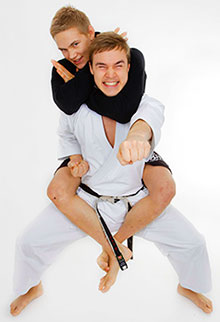
MMA should learn from Karate.
Karate is the original “mixed martial art”.
Long before UFC and its octagon existed, old Karate masters collected, mixed and shared different fighting techniques in Okinawa – the birthplace of Karate.
Today, many of these battle-tested techniques are rarely seen in modern MMA.
Why?
Because most MMA fighters base their techniques on mixing Boxing + Muay Thai + Wrestling + BJJ.
That’s fine. But it’s not enough…
- If you are a MMA fighter, you should evolve. The fight game is moving fast. Don’t get stuck in the same old techniques. Think outside the box. Read this article to gain an edge.
- If you are a Karate fighter, use the following 10 techniques when you fight an MMA athlete. Almost nobody uses these moves in MMA. They will have no clue how to defend themselves.
So, are you ready to learn 10 devastating Karate techniques for MMA?
Read to the end to see all these techniques on video!
Let’s go:
#1: Ude Uchi
First up, we have ude uchi.
“Ude” is Japanese for “forearm”, and “uchi” is strike.
In other words, ude uchi means that you smash either the outside or inside bone of your forearm (ulna/radius bone) into your opponent.
Why it works: When you use ude uchi, the distance between you and your opponent is closer than “regular” ounching range, but longer than elbow strike range. Since most people use the fist or elbow for attacking, your opponent won’t expect an attack from this distance, using the forearm. It’s unexpected. It’s brutal. It’s sweet dreams!
#2: Ura Ken (Without Spinning)
Next up, we have ura ken.
“Ura ken” literally means “backfist” in Japanese.
Sure, a lot of MMA fighters use the backfist. However, they always use it horizontally, and they always spin before striking.
I suggest you try it from different angles, and without spinning.
Why it works: The ura ken is a perfect addition to your striking arsenal. It combines seamlessly with jabs, hooks and uppercuts, and it can be delivered from unorthodox angles with great accuracy. Besides, everyone knows circular attacks have the potential for generating huge power. That’s why people spin when they do the backfist, since it adds momentum. But if you don’t spin, it’s more versatile and sneaky.
#3: Ashi Barai
“Ashi barai” means “foot sweep” in Japanese.
Okay, I admit. It’s not really a “devastating” move.
But it’s the perfect way to set up a devastating move!
Yet, few people know how to use foot sweeps it in MMA – except Karate-based fighters.
It’s so easy though. Just lightly tap your opponents foot when he is about to step. Then follow up with a flurry of strikes to capitalize on any openings created by the sweep.
Why it works: Ashi barai is nearly invisible. While it’s relatively easy for your opponent to spot a regular leg kick, ashi barai is harder to notice since you’re sweeping down by the foot – not the thigh. And it’s super quick, because you don’t need great hip rotation. The key is to time it with your opponent’s step. Try it!
#4: Gyaku Mawashi Geri
This kick is crazy effective.
But it requires a certain degree of external hip rotation to generate power.
If you have stiff hips, work on mobility and flexibility before you start using this kick!
In Japanese, “Gyaku mawashi geri” literally means “reverse roundhouse kick”. Coincidentally, I taught this kick at my first UK seminar the other week.
The idea is simple: kick from inside > out (instead of outside > in), but still use the top of your foot as tool of impact – like a regular roundhouse kick.
Why it works: Gyaku mawashi geri is totally unexpected and mega powerful. It’s also diverse: You can do it with any leg (front/back), you can easily combine it with other kicks (especially circular kicks) and you can aim for both the head and the mid section.
#5: Ura Mawashi Geri (Without Spinning)
This attack is like #2 (ura ken/backfist) but with the foot instead.
You probably know it as “hook kick” in English.
Most people do this kick with their back leg, after spinning – but I want you to try it with your front leg, without spinning.
Why it works: Imagine getting b*tch slapped by an elephant. That’s how it feels when someone hook kicks you in the face (take my word for it). You don’t even have time to blink. It’s so fast! The tool of impact can be either your heel or sole. You don’t need to spin for power – your legs are already powerful enough. Trust me.
#6: Mae Geri (Snap)
When Anderson Silva knocked out Vitor Belfort with this head kick at UFC 126, the MMA world went crazy.
I was like: “Congrats! You are now a yellow belt in Karate!”
The snapping front kick (mae geri) is basically the second technique you learn in Karate, after the straight punch. But most MMA fighters only know the pushing front kick of Thai Boxing/Muay Thai, which is better for creating distance than damage.
However, recently I think more fighters are starting to discover the snap mae geri, which can be done both to the face and midsection. Here’s a perfect one!
Why it works: Your leg muscles are the most powerful muscles in the human body. When all of that power is concentrated to the ball of your foot, great force is generated. The trick is to keep your weight centered, so you can retract your leg. The kick can be aimed at both the head and the mid section. Honestly, I would rather get hit by a dump truck than receive a piercing mae geri in the belly or face.
#7: Mawashi Geri (Ball of Foot)
The mawashi geri (roundhouse kick) is certainly not new in MMA.
But, few people do it with the ball of the foot. This is the old-school way of doing it, and works pretty much like the previous kick – except it’s circular, not straight.
This kick is becoming more popular lately. Here’s a recent example.
Why it works: The roundhouse kick is perhaps the most powerful kick ever. So imagine all that power concentrated into the ball of your foot. It’s brutal! It’s also quite sneaky, since it can reach behind your opponents guard/arms due to the foot position. Aim for the liver, ribs or kidneys. Just pull your toes back, so you don’t break them.
#8: Kansetsu Geri
“Kansetsu geri” is Japanese for “joint kick”.
As the name implies, this is a stomping side kick aimed at the knee joint, or hip joint. The damage it can cause is horrible. That’s why few people use it – because nobody wants to practice with you if you use it all the time!
One of the most successful fighter in the history of MMA, Jon Jones, used this kick with great success in many of his fights. Perhaps that’s why he had so many haters?
Why it works: Every joint has its limits. They don’t bend 360 degrees. By stomping the knee or hip out, you can easily stop the fight – and perhaps your opponents whole career as well. It’s also a good strategic technique for creating distance and keeping your opponent away from you. Use with caution!
#9: Hiji Ate (Upward)
Next, we have “hiji ate” – the elbow strike.
In this case, I’m talking about the upward elbow strike.
Most MMA fighters use elbows in a sideways or downward fashion. That’s good. But, just like most of the techniques in this article, this version of the elbow strike is more sneaky and dangerous.
Why it works: If you stand in a regular fighting position, your elbows naturally point down. So, just bring your elbow forcefully up when your opponent is close enough. It’s almost effortless. You can strike the jaw in a upward motion, or even the solar plexus/sternum in a forward motion. Put your whole body into it. There is no elbow protection being used in MMA, so this technique is extremely devastating.
#10: Morote Zuki
Lastly, a real show-stopper.
“Morote zuki” literally means “double handed strike” in Japanese.
Back in the days, Kazushi Sakuraba used this technique with great success, especially on the ground. The concept is simple: Slap, punch, strike or chop with both hands at the same time. Your opponent will have difficulties defending himself against both hands.
Why it works: Your opponent expects you to attack with one arm at a time. (That’s what most people do.) So, by suddenly using both hands at the same time, you have a great chance of connecting with at least one of your hands. Aim for the temple, ears or floating ribs. But be careful – you can’t defend yourself while doing this technique.
________
Now, watch these 10 techniques on video:
What do you think?
Share this with someone who likes MMA!
Hopefully they can learn from Karate.
The original mixed martial art…
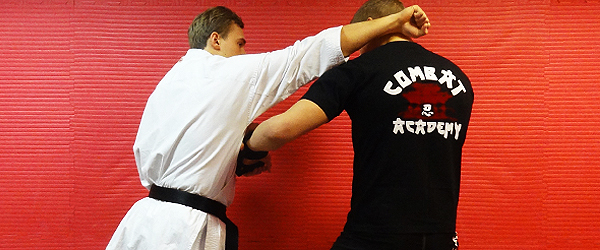


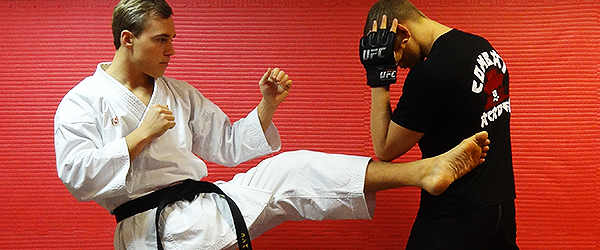



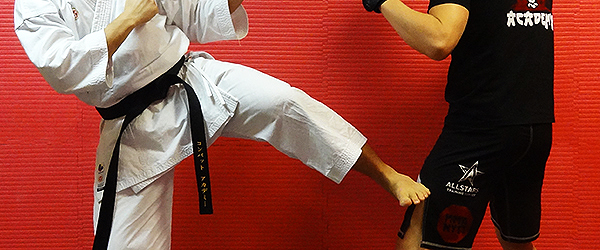
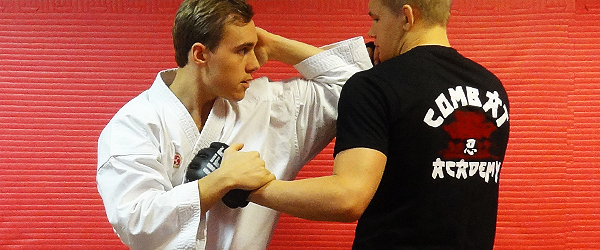
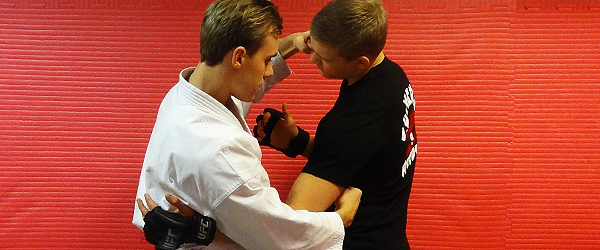
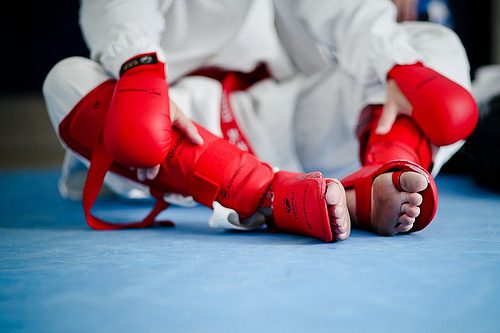


64 Comments